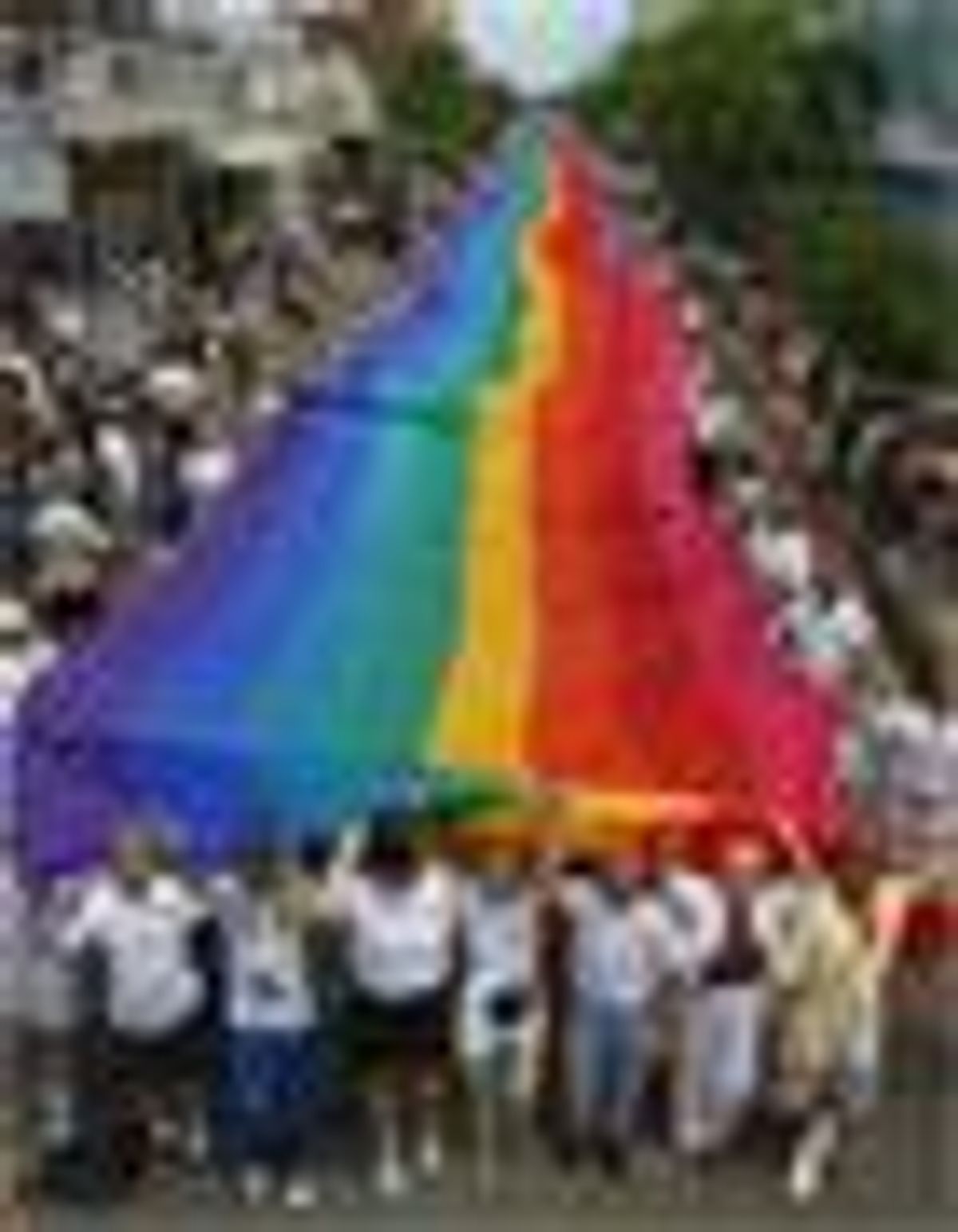
Hunter College released a new LGB-specific poll that reveals fresh insights about the LGB population, how its men and women differ, and an emerging generational divide.
May 01 2008 12:00 AM EST
November 17 2015 5:28 AM EST
By continuing to use our site, you agree to our Private Policy and Terms of Use.

Hunter College released a new LGB-specific poll that reveals fresh insights about the LGB population, how its men and women differ, and an emerging generational divide.
Hunter College released the results of a groundbreaking poll Wednesday that found only 2.9% of Americans older than 18 identify as LGB, lower than the 4%-5% often cited in voter exit polls.
Professor Patrick Egan of New York University, one of the poll's authors, explained that exit polls generally provide an over-representative sample of LGBs. "Exit polls are based on voters -- the people who show up at the polls. Gays and lesbians vote much more consistently than the general population," Egan said.
The survey also found that LGBs are more politically active than their straight counterparts (partly due to a sensibility developed during the coming-out process), women and men vary in terms of the way they categorize themselves on the LGB continuum, and different generations of LGBs have separate priorities for the movement. The poll's authors said it provides the most comprehensive and truly representative picture of the lesbian, gay, and bisexual population to date because it was specifically designed for the LGB population. Transgender individuals were not included because to date their numbers are too few to provide a statistically accurate representation.
While the community's numbers are smaller than previously thought, results also showed that LGBs may be having a disproportionate impact on the political process, not only through participation at the polls but through civic engagement in activities such as volunteering for campaigns, writing letters to editors, contacting government officials, and attending protests and rallies. "It's this sort of elusive concept that good political theorists want everyone to do, which is to be engaged with their community," said Egan, "and by every measure, LGBs are more engaged with their communities than the general population."
Egan added that the finding was "pleasantly surprising," as juxtaposed to studies that suggest higher incidences of mental health problems and substance abuse in the gay population. "That may all be true, but there's something about the coming-out process that is actually catalyzing LGBs to be involved in public life," he said.
In terms of the movement's goals, a generational divide emerged between younger gays (aged 18 to 25), who placed access to marriage and adoption rights as their highest priorities, and those 65 and older, who prioritized laws against bias crimes and workplace discrimination. The report notes that while older generation LGBs emphasize "freedom from discrimination," younger LGBs value "the freedom to live their lives" in similar fashion to heterosexual Americans.
The poll also found that LGBs are younger overall than mainstream America, with the average age of those over 18 being 41 years of age, versus 46 for the general population. Even more striking, only 3.5% of LGBs are 65 or older, whereas seniors constitute 16.3% of American adults.
Egan noted that the low number of LGB seniors may indicate several things beyond the simple fact that fewer of them exist. "LGBs born in early generations may be less likely to consider themselves LGB or may be less likely to disclose as such on a survey," he said. The high number of gay men lost to AIDS in the '80s and '90s might also partially account for the deficit, but Egan said they had not yet dissected the numbers by gender, which could lend further insight.
Other findings included the fact that women and men make up equal shares of the LGB population, but men account for two thirds of those who identify as lesbian or gay, while women account for two thirds of those who identify as bisexual. Bisexual men were also more likely to have had a same-sex experience within the past year than bi women. "The takeaway here is that, for bi men bisexuality is a behavior, and for women bisexuality is an identity," said Egan.
LGB people are also concentrated in states that provide LGBT rights and protections, with one third of the population living in the 10 states plus the District of Columbia that grant legal protections to same-sex couples (California, Connecticut, Hawaii, Massachusetts, Maine, New Hampshire, New Jersey, Oregon, Vermont, and Washington).
Beyond the fact that this poll was targeted to the LGB population, Egan said methodology also set it apart from other polls. The company that conducted the poll, Knowledge Networks Inc., recruits its subjects using a random-digit dial process over the phone -- still the most reliable polling method. But it asks the questions over the Internet and provides Web TV for anyone who doesn't have Internet capabilities. Egan explained that people are "much more likely to be candid" over the Internet, especially about questions of sexuality, than they are with a phone interviewer.
"You get the amazing combination of a representative way of recruiting interviewees along with the ability to ask them detailed and sensitive questions over the Internet," he said.
Knowledge Networks keeps a sample pool of 43,000 people on their rolls at any one time. The sample size for this poll was 768 respondents with a 3.5% margin of error. The Hunter College poll was funded through a grant from the Human Rights Campaign Foundation. Professors Murray Edelman of Rutgers University and Kenneth Sherrill of Hunter College authored the poll along with Egan.
Want more breaking equality news & trending entertainment stories?
Check out our NEW 24/7 streaming service: the Advocate Channel!
Download the Advocate Channel App for your mobile phone and your favorite streaming device!